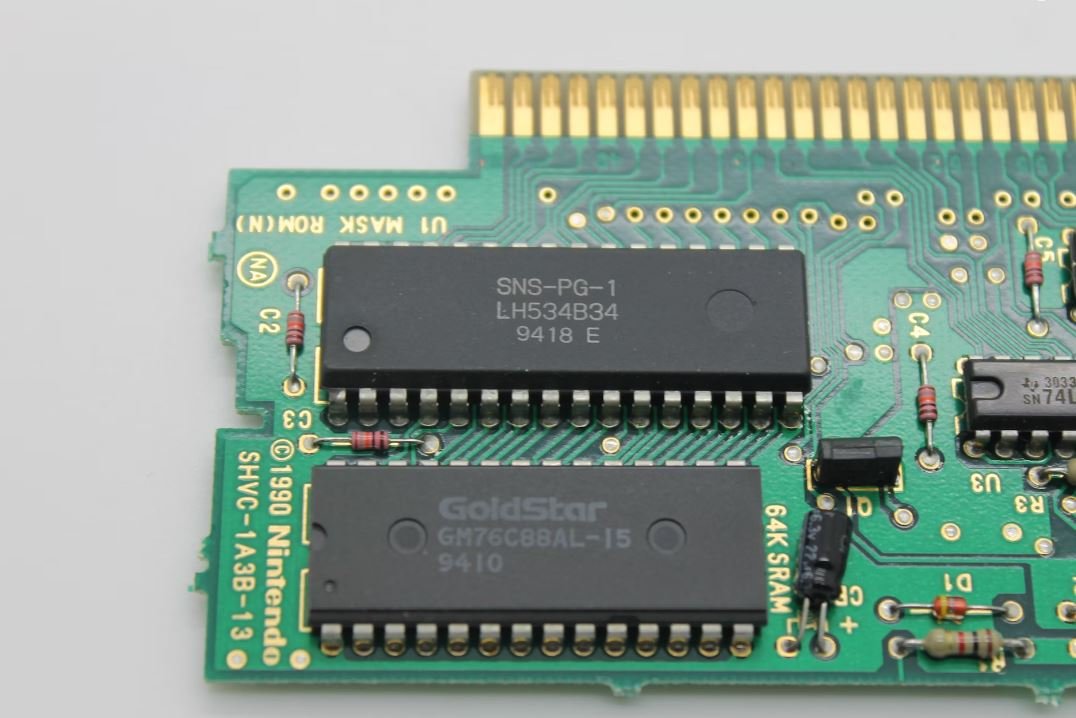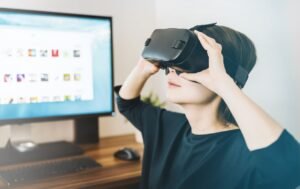AI-Generated Models Instagram
Artificial Intelligence (AI) has revolutionized numerous industries, including social media. One area where AI has made a significant impact is in the generation of models for Instagram. These AI-generated models use algorithms to create highly realistic images that are virtually indistinguishable from real people. This article explores the emergence of AI-generated models on Instagram, their implications, and their growing popularity.
Key Takeaways:
- AI-generated models on Instagram use algorithms to create realistic images.
- These models have triggered debates around authenticity and ethical implications.
- Influencers and brands are increasingly collaborating with AI-generated models due to their versatility.
AI-generated models on Instagram are transforming the way we perceive the fashion and influencer industry. These models, known as virtual influencers, are computer-generated characters that function as social media influencers. They can be dressed up in various outfits, showcased attending events, and even endorse products. The striking aspect of these models is their uncanny resemblance to real people, making it difficult to discern their artificial nature.
One interesting aspect of AI-generated models is their ability to tailor their appearance to suit different brands’ aesthetics or individual client preferences. They can be designed to embody different races, body types, and styles, showcasing the versatility and potential inclusivity of AI-generated models. This adaptability enables them to represent a wide range of demographics and cater to specific marketing needs.
| Pros | Cons |
|---|---|
| AI-generated models offer new creative opportunities for photographers and marketers. | They raise ethical questions regarding authenticity and deception. |
| Virtual influencers provide an alternative to traditional models, reducing costs and time constraints. | They may perpetuate unrealistic beauty standards and contribute to body image issues. |
As AI-generated models continue to gain popularity, the fashion and influencer industry faces several ethical dilemmas. The rise of virtual influencers has sparked debates about authenticity and the potential for misleading consumers. Critics argue that by blurring the lines between computer-generated and real influencers, AI-generated models may deceive audiences and erode trust.
AI-generated models have also faced criticism for perpetuating unrealistic beauty standards. Their flawless appearances, created through algorithms, may contribute to body image issues and further marginalize individuals who do not fit conventional beauty ideals. It is essential for brands and marketers to strike a balance between leveraging AI technology and promoting body positivity in their marketing campaigns.
Advantages and Disadvantages of AI-Generated Models on Instagram
- Advantages:
- Enhanced creativity: AI-generated models provide new and exciting opportunities for photographers and marketers to explore.
- Cost and time efficiency: Using virtual influencers can significantly reduce costs and overcome scheduling challenges associated with traditional models.
- Disadvantages:
- Ethical concerns: The lack of transparency regarding the artificial nature of virtual influencers may raise ethical questions regarding deception and authenticity.
- Unrealistic beauty standards: AI-generated models may perpetuate unrealistic body ideals and contribute to negative body image issues among audiences.
| Influencer | Number of Followers | Brands Collaborated With |
|---|---|---|
| Lil Miquela | 3.5 million | Prada, Calvin Klein |
| Shudu | 216k | Ellesse, Balmain |
| Imma | 286k | Kenzo, Dunhill |
The success of AI-generated models on Instagram can be attributed to the collaboration between influencers and brands. Many well-known companies, including Prada and Calvin Klein, have embraced virtual influencers, recognizing their potential for engaging with a younger, digitally-savvy audience. As the demand for authenticity and relatability grows, it is crucial for brands to navigate the incorporation of AI-generated models ethically.
AI-generated models have disrupted the fashion and influencer industry, offering new possibilities for creativity and marketing. However, debates surrounding authenticity, transparency, and perpetuation of beauty norms highlight the need for a thoughtful approach to the usage of AI-generated models. As technology continues to advance, it is essential for brands and influencers to strike a balance between embracing innovation and promoting meaningful connections with their audiences.

Common Misconceptions
Misconception 1: AI-generated models are indistinguishable from real people
One common misconception about AI-generated models is that they are so realistic that it’s impossible to tell them apart from real people. However, this is not entirely true. While AI-generated models have become increasingly sophisticated, there are still subtle differences that can help identify them.
- Real models have complexities in their facial expressions that AI-generated models often lack.
- AI-generated models may have unnaturally perfect proportions and symmetry.
- Their clothing, textures, and materials may slightly differ from what is typical of real-world fashion.
Misconception 2: AI-generated models are taking over the fashion industry
Another misconception is that AI-generated models are rapidly replacing human models in the fashion industry. While AI-generated models have gained popularity, they have not completely usurped humans.
- Human models possess the ability to bring a natural and authentic presence to fashion campaigns.
- AI-generated models lack the ability to express emotions and form a personal connection with viewers.
- Human models have diverse body shapes and sizes, whereas AI-generated models often represent an idealized, sometimes unattainable, standard of beauty.
Misconception 3: AI-generated models are flawless
Some people have the misconception that AI-generated models are perfect and free from any imperfections. However, like any other AI technology, they are not flawless.
- AI-generated models may exhibit glitches or errors in rendering.
- Creating AI-generated models requires human intervention and decisions, which can introduce subjective biases or limitations.
- The algorithms that generate AI models are trained on existing data, which may contain inherent biases or limitations.
Misconception 4: AI-generated models are used only in fashion
AI-generated models are not restricted to the fashion industry alone, contrary to popular belief. They have broader applicability in various fields beyond fashion.
- AI-generated models can be used in virtual simulations for engineering and manufacturing purposes.
- They can be employed in video game development to create lifelike characters.
- AI-generated models have the potential to be utilized in medical research and diagnostics.
Misconception 5: AI-generated models will replace human creativity
One of the most common misconceptions is that AI-generated models will lead to the demise of human creativity in the modeling industry. However, AI is not designed to replace human creativity, but rather augment it.
- Human creativity is needed to conceptualize and create the AI-generated models in the first place.
- AI can assist in providing new perspectives and ideas, but it still relies on human direction and imagination.
- Ultimately, it is the human touch that brings unique and diverse creative expressions to the modeling industry.

The Rise of AI-Generated Models on Instagram
Instagram, one of the most popular social media platforms worldwide, has seen a transformative shift with the integration of AI-generated models into its environment. These virtual beings have taken the platform by storm, captivating users with their stunning visuals and seemingly realistic interactions. As technology advances, the line between reality and virtuality becomes increasingly blurred. In this article, we explore ten fascinating aspects of AI-generated models on Instagram, shedding light on their impact and relevance in the digital sphere.
1. AI-Generated Models vs. Human Models
The emergence of AI-generated models has sparked a debate regarding their potential impact on the traditional modeling industry. While human models bring authenticity and emotions to the table, AI-generated models offer an alternative avenue for creativity and innovation.
2. Popularity of AI-Generated Models
AI-generated models have amassed a significant following on Instagram, rivaling that of famous human influencers. Their impeccable aesthetics and otherworldly charm have attracted millions of followers, highlighting a growing trend of virtual personalities on social media platforms.
3. Brand Collaborations with AI-Generated Models
Brands are recognizing the marketing potential of AI-generated models and are starting to collaborate with them in influencer campaigns. These virtual beings offer a unique way for companies to reach their target audience and create captivating content.
4. Ethical Considerations of AI-Generated Models
The advent of AI-generated models has raised ethical debates surrounding representation, diversity, and the commodification of human appearance. Striking a balance between technological advancements and responsible representation is essential moving forward.
5. AI-Generated Models’ Impact on Body Image
The flawless appearances of AI-generated models have sparked discussions about body image ideals and their potential influence on society. Understanding the psychological implications and ensuring healthy perceptions of beauty are crucial topics for researchers and enthusiasts.
6. Customization and Personalization in Virtual Models
AI algorithms enable users and brands to customize AI-generated models to fit their vision precisely. This level of personalization opens new possibilities for creative expression and provides a platform for inclusiveness.
7. Testing Virtual Fashion Trends on AI-Generated Models
Virtual beings are also becoming testing grounds for outlandish fashion trends. Brands can experiment with innovative designs without the constraints of human form, pushing the boundaries of fashion and encouraging artistic exploration.
8. The Future of AI-Generated Models in Advertising
As AI-generated models gain prominence, advertising agencies are taking note of the potential to create compelling and impactful campaigns. Embracing this technology allows them to reach a wider audience and create engaging experiences that cut through the clutter.
9. AI-Generated Models and Influencer Marketing
A new breed of Instagram influencers is shaping the influencer marketing landscape. AI-generated models offer a fresh and unique approach, captivating audiences and opening doors to partnership opportunities with brands.
10. Exploring the Boundaries of AI-Generated Models
This new era of virtual personalities invites exploration into the boundaries and possibilities of AI-generated models. As technology evolves, there is tremendous potential for further advancements and integration into various aspects of our lives.
These ten facets shed light on the transformative impact of AI-generated models on Instagram and the wider digital ecosystem. As technology continues to blur the distinction between physical and virtual worlds, the realm of AI-generated models is undoubtedly set to shape the future of influence, marketing, and creative expression.
Frequently Asked Questions
AI-Generated Models on Instagram
What are AI-generated models on Instagram?
AI-generated models on Instagram refer to virtual characters created using artificial intelligence algorithms. These models mimic human appearance and behavior, but they are entirely computer-generated.
How are AI-generated models created?
AI-generated models are created through a combination of computer vision, machine learning, and 3D modeling techniques. These models are trained on large datasets of real human images to learn patterns and generate realistic digital representations.
What purpose do AI-generated models serve on Instagram?
AI-generated models serve various purposes on Instagram, including advertising, brand collaborations, and artistic expression. They can be used as virtual influencers to promote products or services and engage with followers.
Can AI-generated models interact with real Instagram users?
Yes, AI-generated models can interact with real Instagram users. They are programmed with speech and text recognition capabilities, allowing them to respond to comments, direct messages, and even hold conversations with followers.
Are AI-generated models being used by real people or companies?
Yes, many individuals and companies are using AI-generated models on Instagram. Some brands have even created their own virtual influencers as part of their marketing strategies. These models have garnered significant attention and followers on the platform.
Are AI-generated models indistinguishable from real humans?
AI-generated models have become increasingly realistic, but they can still be identified as virtual characters. Close inspection may reveal subtle differences in appearance or behavior that distinguish them from real humans.
Do AI-generated models have their own personalities?
AI-generated models can have simulated personalities. Developers can program them with specific traits, interests, and characteristics to make them appear more human-like and relatable to their followers.
Can AI-generated models improve over time?
Yes, AI-generated models can improve over time through continued training and refinement. As algorithms and technology progress, these models can become even more realistic and capable of mimicking human behavior with greater accuracy.
What are the ethical implications of AI-generated models on Instagram?
The use of AI-generated models raises ethical concerns regarding transparency, authenticity, and the impact on real influencers and models. There are debates surrounding the disclosure of virtual influencers’ artificial nature and the potential monetization and exploitation of digital identities.
What is the future of AI-generated models on Instagram?
The future of AI-generated models on Instagram is still evolving. They offer new avenues for creativity, marketing, and engagement on social media platforms. However, the long-term impact and societal acceptance of these virtual characters remain to be seen.




